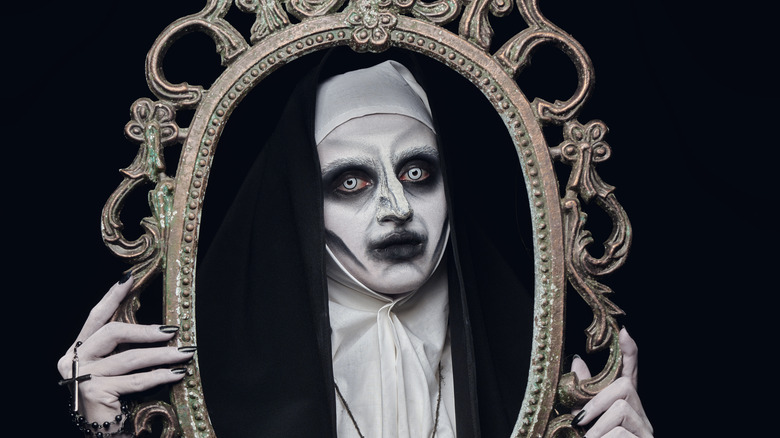This Raspberry Pi Project Is Sure To Give Your Friends A Scare This Halloween
We may receive a commission on purchases made from links.
The classic Halloween decorations will always have that hauntingly timeless charm, from the jack-o'-lanterns and black candles sitting on the countertops to the witch's broom and skeleton lurking in the corners. They never fail to add an eerie ambiance to your home each haunting season, and they're also pretty easy to set up. However, if you keep reusing the same old props year after year, not only will you get bored with your Halloween-themed home, but your guests won't be spooked anymore, too. So, why not spruce up the space with a touch of technology?
"But they're too expensive!" you might say. Yes, some techy Halloween decor like an animatronic witch and floating candles can carry quite a hefty price tag, typically starting at $50. Luckily for you DIY enthusiasts, there's a more budget-friendly alternative. Here's an old TV project that only uses a Raspberry Pi and a cheap motion sensor and is guaranteed to frighten your friends.
An eerie portrait straight out of a haunted house
True to its name, the Living Portrait is an artwork with a thrilling twist — it suddenly bursts into life every time someone approaches the portrait or motion is detected in its proximity. Initially, it displays a static and normal-looking person. But once triggered, it automatically morphs into a disturbing and horrifying zombie-like figure, complete with movements and scream sound effects that are sure to send shivers down the spine of the unsuspecting audience.
The Living Portrait is powered by two primary components: a Raspberry Pi and a Passive Infrared (PIR) Motion Sensor. The PIR sensor scans the area of any movement, typically covering a range of up to 20 feet. Upon detecting motion, the sensor sends a signal to the Raspberry Pi, which, in turn, processes the input and triggers the pre-installed media player to start playing the haunting video.
This easy Raspberry Pi project requires only four hardware parts: the Raspberry Pi, PIR sensor, monitor or TV display, and an appropriate frame to encase the display. For the video content, the creator initially used an UnLiving Portrait video from AtmosFX. However, you're free to make or source your own media. Just keep in mind that the Python code used in the project works by pausing the video before the scary transformation to show the normal-looking portrait. You'd want to use a video that has a similar effect when paused.
